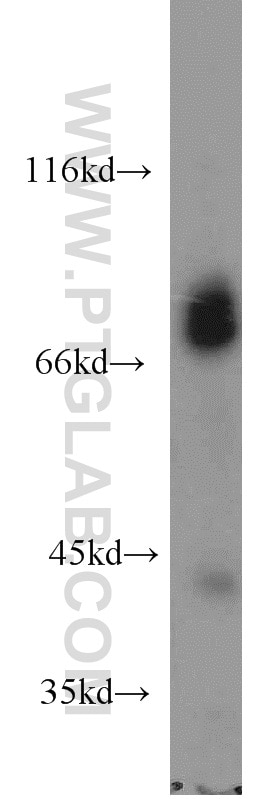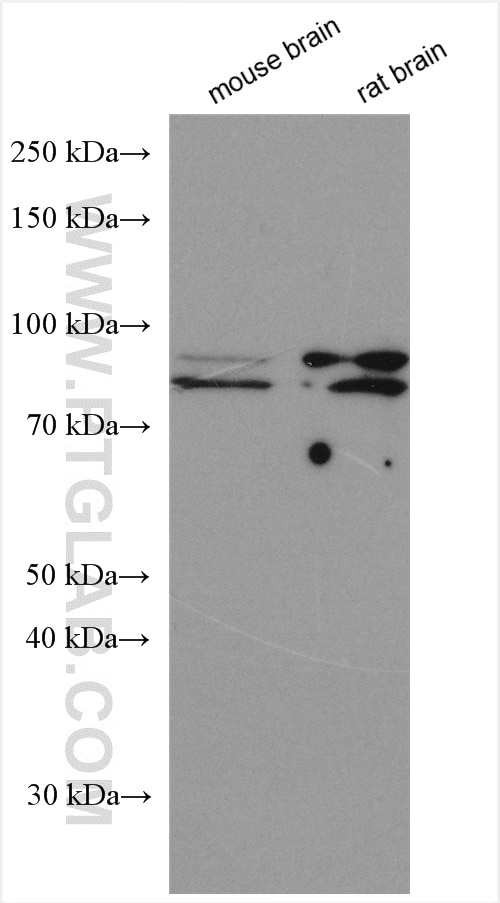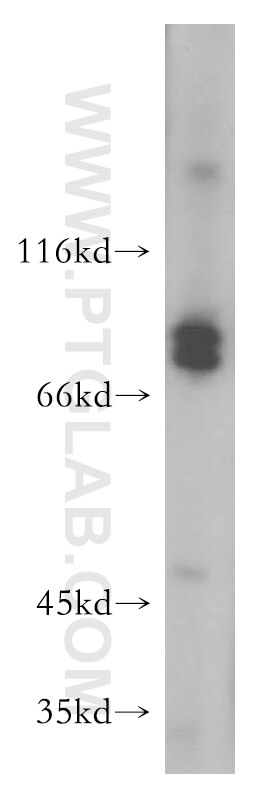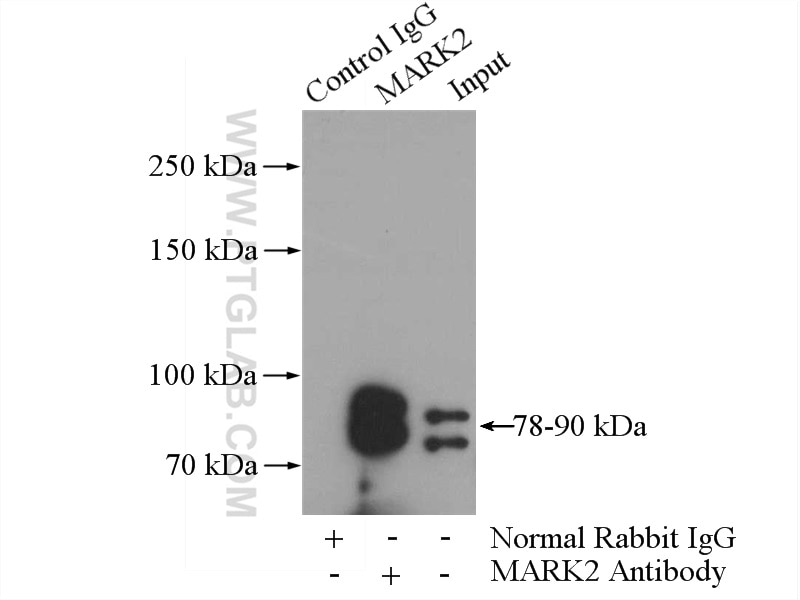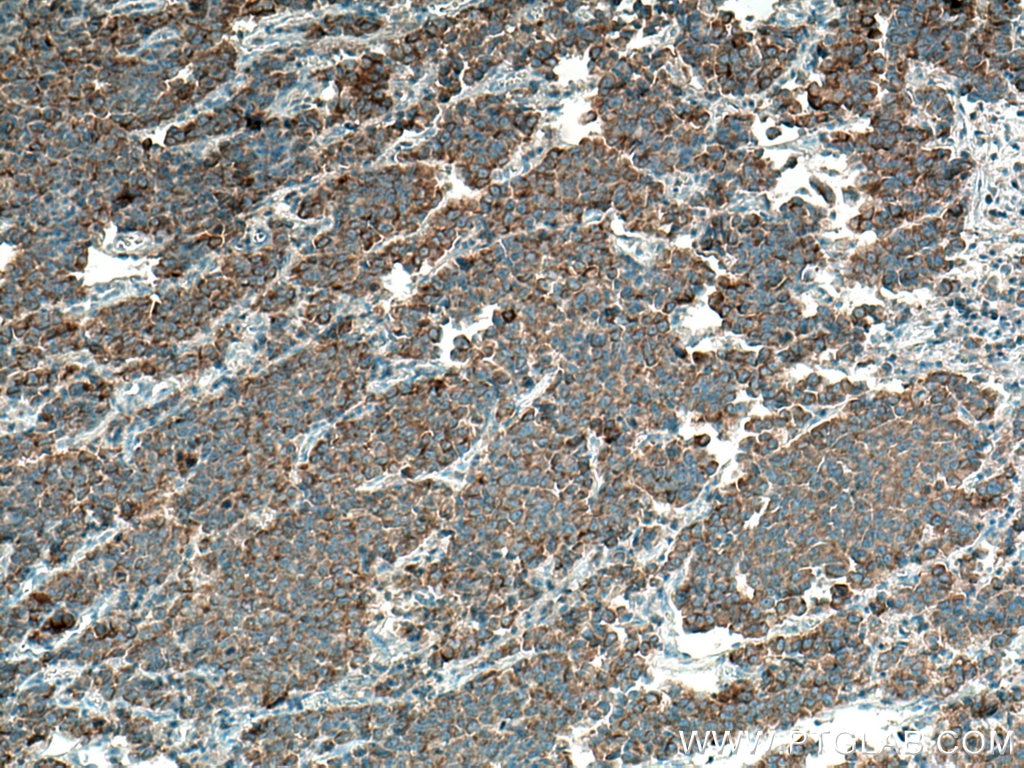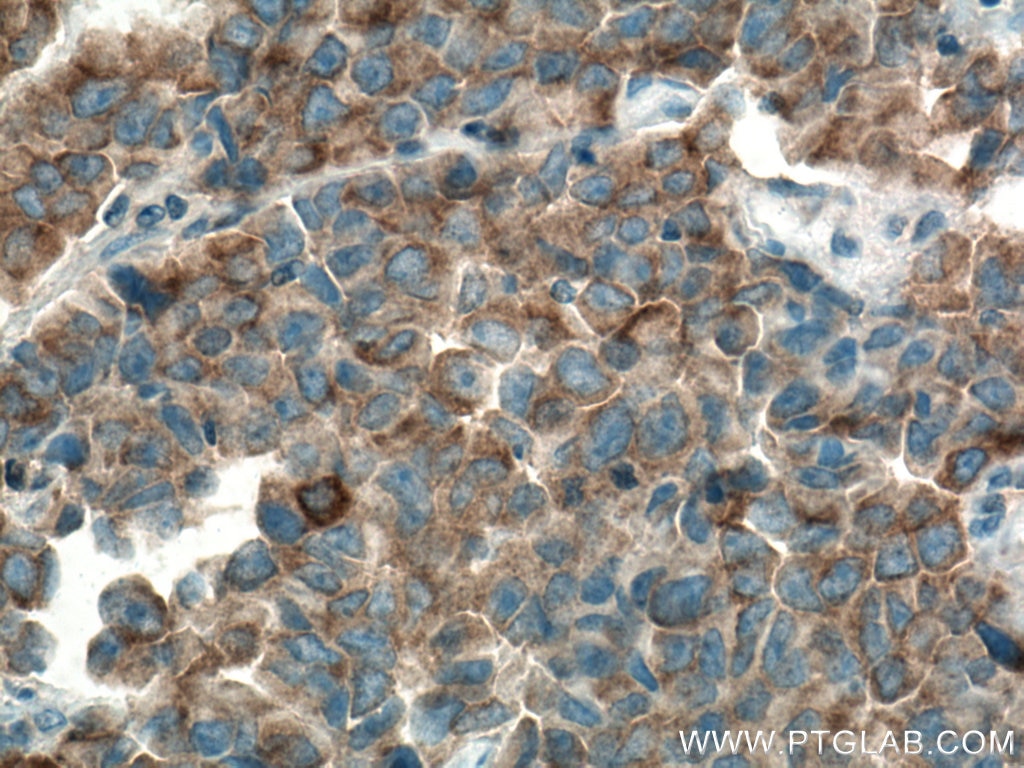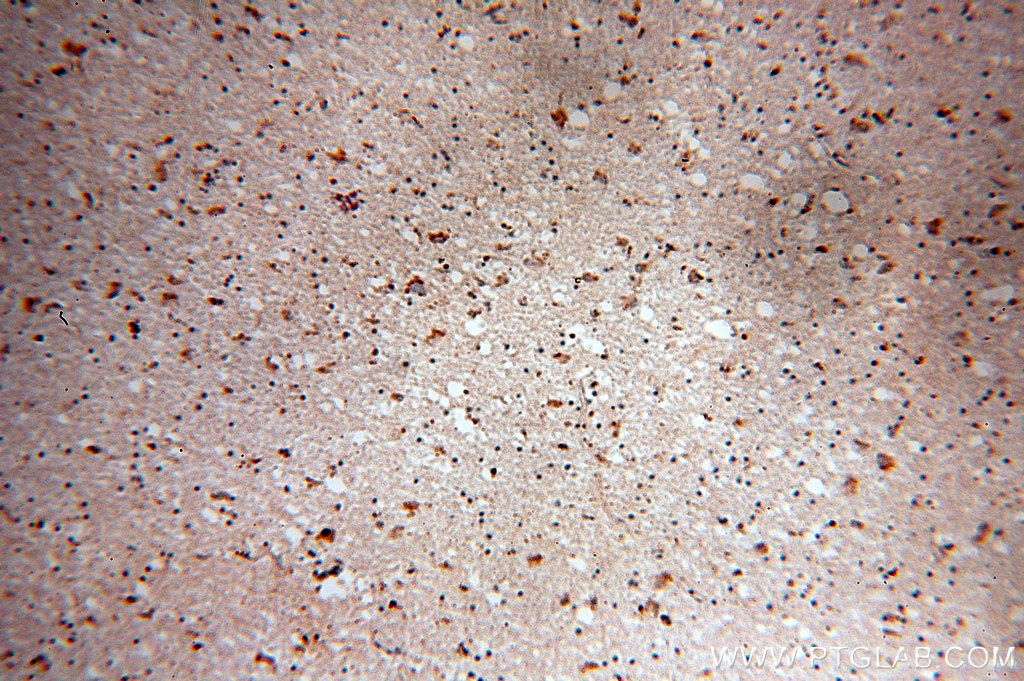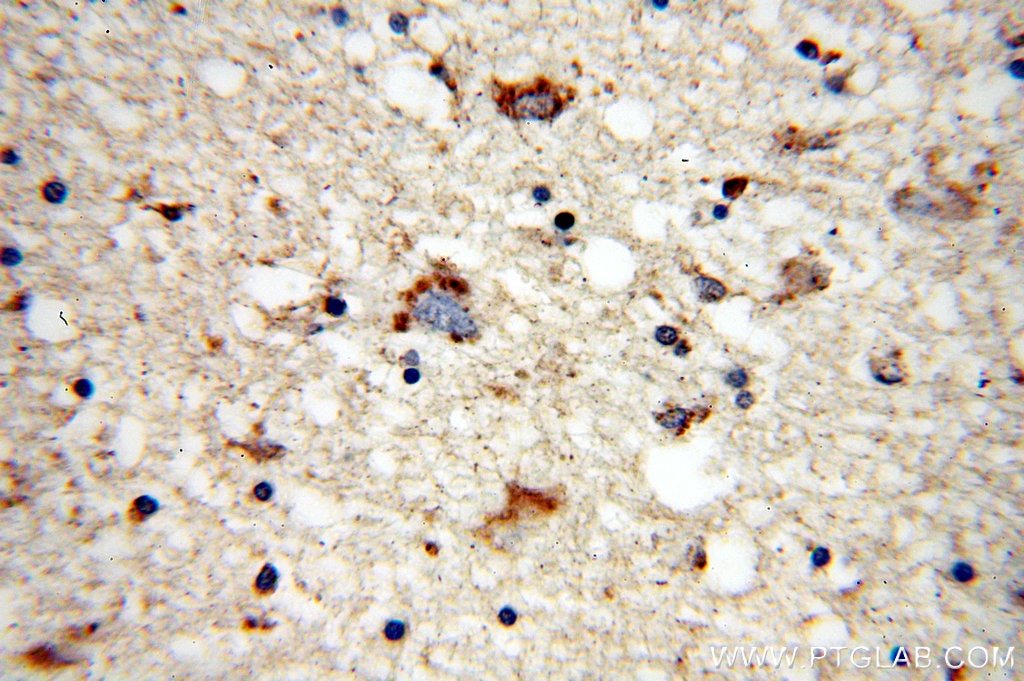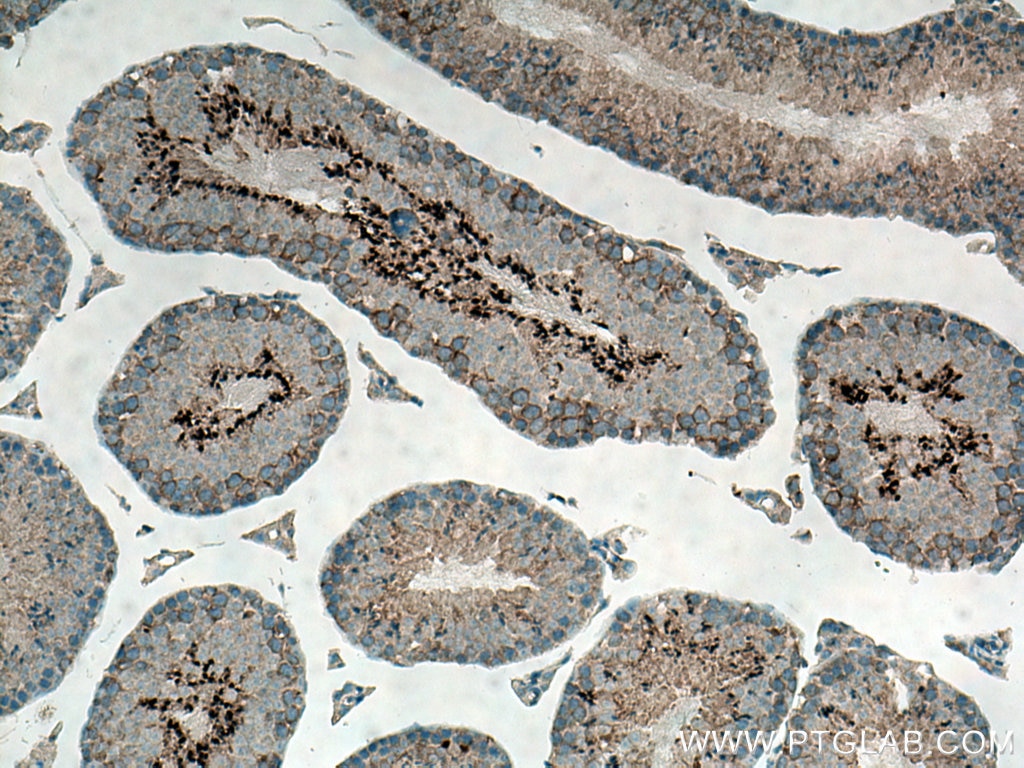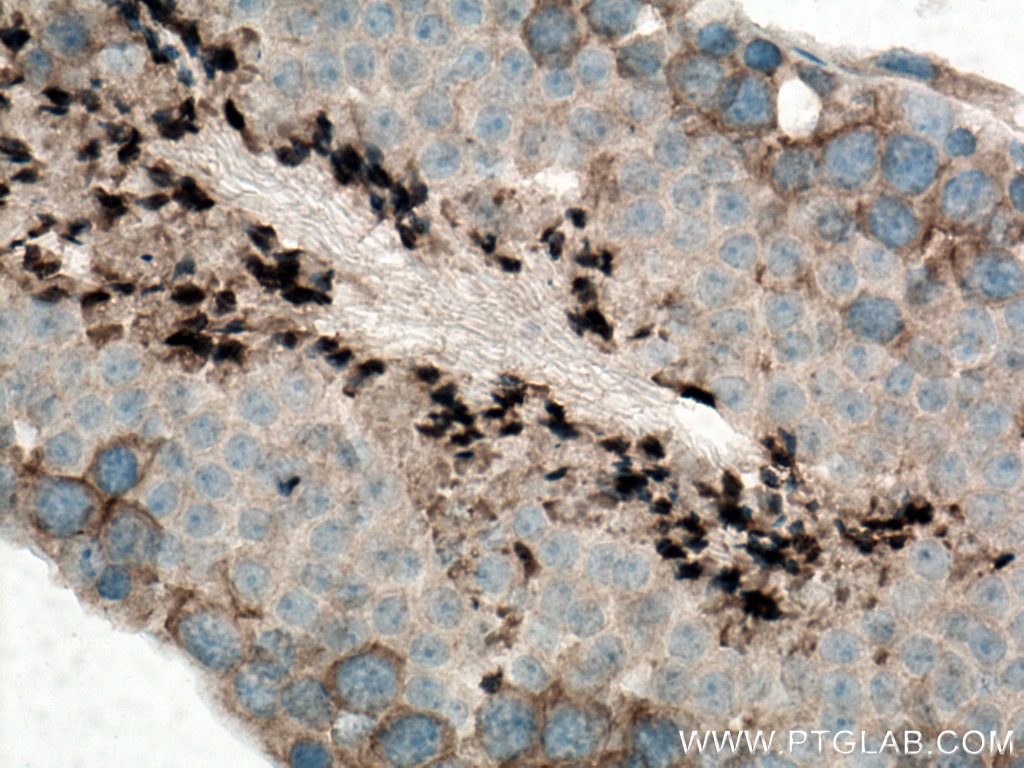Validation Data Gallery
Tested Applications
| Positive WB detected in | mouse brain tissue, rat brain tissue |
| Positive IP detected in | rat brain tissue |
| Positive IHC detected in | human prostate cancer tissue, human brain tissue, mouse testis tissue Note: suggested antigen retrieval with TE buffer pH 9.0; (*) Alternatively, antigen retrieval may be performed with citrate buffer pH 6.0 |
Recommended dilution
| Application | Dilution |
|---|---|
| Western Blot (WB) | WB : 1:500-1:2000 |
| Immunoprecipitation (IP) | IP : 0.5-4.0 ug for 1.0-3.0 mg of total protein lysate |
| Immunohistochemistry (IHC) | IHC : 1:200-1:800 |
| It is recommended that this reagent should be titrated in each testing system to obtain optimal results. | |
| Sample-dependent, Check data in validation data gallery. | |
Published Applications
| KD/KO | See 4 publications below |
| WB | See 14 publications below |
| IHC | See 1 publications below |
| IF | See 3 publications below |
| IP | See 1 publications below |
Product Information
15492-1-AP targets MARK2 in WB, IHC, IF, IP, ELISA applications and shows reactivity with human, mouse, rat samples.
| Tested Reactivity | human, mouse, rat |
| Cited Reactivity | human, mouse, rat |
| Host / Isotype | Rabbit / IgG |
| Class | Polyclonal |
| Type | Antibody |
| Immunogen |
CatNo: Ag7884 Product name: Recombinant human MARK2 protein Source: e coli.-derived, T-HIS Tag: 6*His Domain: 1-363 aa of BC008771 Sequence: LNERDTEQPTLGHLDSKPSSKSNMIRGRNSATSADEQPHIGNYRLLKTIGKGNFAKVKLARHILTGKEVAVKIIDKTQLNSSSLQKLFREVRIMKVLNHPNIVKLFEVIETEKTLYLVMEYASGGEVFDYLVAHGRMKEKEARAKFRQIVSAVQYCHQKFIVHRDLKAENLLLDADMNIKIADFGFSNEFTFGNKLDTFCGSPPYAAPELFQGKKYDGPEVDVWSLGVILYTLVSGSLPFDGQNLKELRERVLRGKYRIPFYMSTDCENLLKKFLILNPSKRGTLEQIMKDRWMNVGHEDDELKPYVEPLPDYKDPRRTELMVSMGYTREEIQDSLVGQRYNEVMATYLLLGYKSSELEGDTI 相同性解析による交差性が予測される生物種 |
| Full Name | MAP/microtubule affinity-regulating kinase 2 |
| Calculated molecular weight | 88 kDa |
| Observed molecular weight | 77-90 kDa |
| GenBank accession number | BC008771 |
| Gene Symbol | MARK2 |
| Gene ID (NCBI) | 2011 |
| RRID | AB_2140752 |
| Conjugate | Unconjugated |
| Form | |
| Form | Liquid |
| Purification Method | Antigen affinity purification |
| UNIPROT ID | Q7KZI7 |
| Storage Buffer | PBS with 0.02% sodium azide and 50% glycerol{{ptg:BufferTemp}}7.3 |
| Storage Conditions | Store at -20°C. Stable for one year after shipment. Aliquoting is unnecessary for -20oC storage. |
Background Information
MARK2 is also named as EMK1(ELKL motif kinase 1), Par1b and belongs to the CAMK Ser/Thr protein kinase family. Par1b/MARK2 plays a critical role in neuronal polarity in the process of axon specification from multiple candidate neurites using primary cultures of mammalian hippocampal neurons(PMID:20194617). It has 16 isoforms produced by alternative promoter usage and alternative splicing with the molecular mass of 77-90kDa and can exsit as a dimer(PMID:16803889).
Protocols
| Product Specific Protocols | |
|---|---|
| IHC protocol for MARK2 antibody 15492-1-AP | Download protocol |
| IP protocol for MARK2 antibody 15492-1-AP | Download protocol |
| WB protocol for MARK2 antibody 15492-1-AP | Download protocol |
| Standard Protocols | |
|---|---|
| Click here to view our Standard Protocols |
Publications
| Species | Application | Title |
|---|---|---|
Mol Cell An AMPK-Independent Signaling Pathway Downstream of the LKB1 Tumor Suppressor Controls Snail1 and Metastatic Potential. | ||
Nat Commun TNK1 is a ubiquitin-binding and 14-3-3-regulated kinase that can be targeted to block tumor growth.
| ||
J Neurosci Unbiased proteomics of early Lewy body formation model implicates active microtubule affinity-regulating kinases (MARKs) in synucleinopathies. | ||
FASEB J Cdc42 is involved in NC1 peptide-regulated BTB dynamics through actin and microtubule cytoskeletal reorganization. | ||
FASEB J Regulation of the blood-testis barrier by a local axis in the testis: role of laminin α2 in the basement membrane. | ||
J Cell Sci Molecular determinants of αVβ5 localization in flat clathrin lattices - role of αVβ5 in cell adhesion and proliferation.
|

